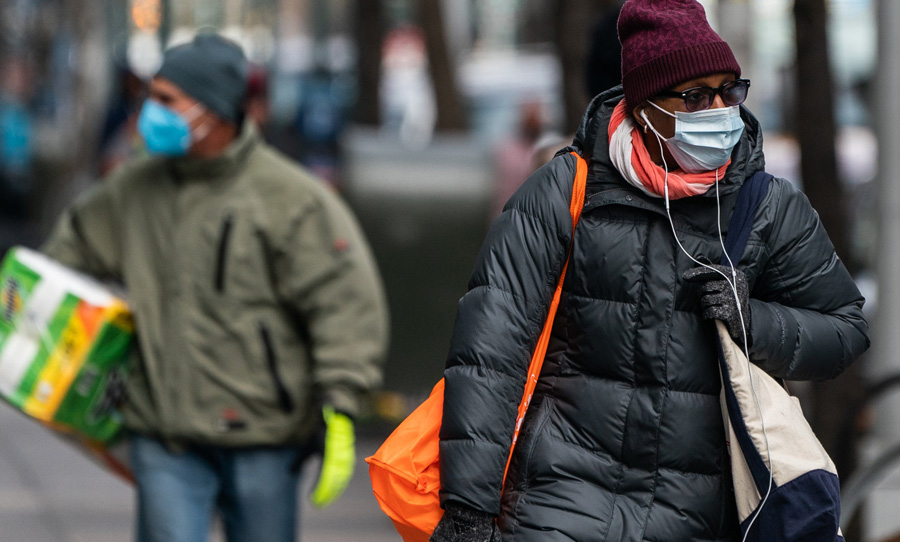The novel coronavirus (COVID-19) is undoubtedly the weirdest and gnarliest thing to happen in most of our lives. The pandemic has taken an unprecedented hold on the world, affecting nearly every nook and cranny of the planet and impacting greatly upon the day-to-day function of life as we once knew it.
With the speed of today whirring by and changes to legislation happening faster than ever, it may be difficult to stay in the loop with the viral news. Anyway, we’ve got you covered. Here’s a little rundown we’ve compiled answering common questions about the virus and what to keep in mind. As Joe Strummer once said: “The future is unwritten”. Indeed, it really is.
Coronavirus has taken an unprecedented hold on life as we once knew it. Staying informed and up-to-date with news is the best way to stay safe and help flatten the curve.
Symptoms
Just like any disease, the severity of symptoms for the virus varies greatly from person to person. One may experience a mild illness while another person may feel like they have pneumonia. Some may not even know they’ve got it, which is just one reason for why the virus spreads so quickly and easily.
The primary COVID-19 symptoms include fevers and respiratory complications such as coughing, a sore throat and shortness of breath. Other symptoms can include runny nose, headache, muscle or joint pains, nausea, diarrhoea, vomiting, loss of sense of smell, altered sense of taste, loss of appetite and fatigue.
Refer to this online symptom checker tool to find out if you meet the Australian Government guidelines for COVID-19 testing. The Australian Government and Health Department is urging anyone showing even mild symptoms to go and get tested. Here’s how to go about doing that in the safest way possible.
Seeking medical attention and safety precautions
How can you tell the difference between coronavirus and a cold? Without a test, you actually can’t. Anyone with cold or flu-like symptoms should go and get a test.
If you think you need to get tested, there are a few ways to go about doing so.
- Attend a free COVID-19 respiratory clinic. Find the nearest one to you here.
- Contact a doctor or hospital and they will arrange a test. This may incur a fee.
- If it’s a definite medical emergency, dial Triple ‘O’.
Prior to visiting a doctor, call the practice and follow their verbal instructions. Don’t just walk right into a medical centre if you have any of the above symptoms.
- When exposing yourself to the public, keep at least 1.5m distance from others.
- Wear a mask, if you’ve got one.
- Cover any coughs or sneezes with your elbow.
Inform your doctor with as much detail as possible. Tell them what symptoms you have, travel history and medical history if you aren’t visiting your regular doc. Download the COVIDSafe App which traces your tracks and will quickly notify you if you’ve come into contact with someone who has coronavirus.
Testing in Australia has increased rapidly in response to the ferocity of the virus. Check out this guidance for people getting tested for COVID-19. Dial this line if you are seeking information on coronavirus (COVID-19). It operates 24 hours a day, seven days a week.
Who is most at risk?
Coronavirus attacks the respiratory system, so those people with chronic health conditions and compromised immune systems are more at risk. If an asthmatic person were to contract coronavirus, they would slot right into the high-risk department.
Older people are particularly at a higher risk if they contract the virus. As age increases, so does the risk (70+, or 65+ if you have a chronic medical condition).
High-risk environments include congested spaces and remote areas that are lacking in health facilitates. Some particular places are more likely to be exposed to ongoing health issues. These include:
- Aged and residential care facilities
- Detention centres or correctional facilities
- Boarding schools
- Military group residences and other closed settings
- Rural and remote Aboriginal and Torres Strait Islander communities
Hospitalisation and recovery times
The majority of hospitalised patients already have ongoing health issues. Around 80% of people recover from the disease without needing special treatment. However, the illness can be very serious for some.
Recovery times for the virus vary, depending on the severity of the symptoms and the way the body reacts. According to World Health Organization (WHO), the median recovery rate for mild cases is approximately 2 weeks and 3-6 weeks for severe cases or patients with a critical disease.
According to the most recent Department of Health, States and Territories Report, there are currently 259 recorded COVID-19 cases admitted to hospital, with 49 patients in ICUs. As of yesterday (July 27), there are 10 people admitted to hospital for the virus in NSW (of which half are in ICUs).
Recent changes to NSW restrictions
Previously, venues (such as cafes, restaurants, food and drink premises, micro-breweries, cellar doors, casinos, registered clubs, small bars and casinos) were not restricted by capacity limits. No matter the size of the space, they need only comply with the 4 square metre distancing rule. But now they fall under the same criteria as the pubs.
- Maximum of 10 people per booking or per table.
- Maximum of 10 people on a group entering or being on the premises.
- Alcohol can only be consumed by seated customers.
- Maximum of 300 people in the venue at any one time or one customer per 4 square metres, whichever is the lesser.
Places of public worship (such as churches, synagogues and temples) will be limited to the lesser of 100 people or one person per 4 square metres.
Here are some common questions about the new rules for NSW.
Check out the most recent COVID-19 surveillance report for NSW for the week ending July 18.
Effectiveness of masks
Due to the major spike in coronavirus cases in Victoria, the local population has been advised to wear face masks. But how effective are they in stopping the spread of contraction?
“Studies have recently shown that, even when factoring in imperfections and human error, wearing face masks can reduce transmission of coronavirus by around 60 per cent,” reads a press release from the Victorian State Government.
A recent academic study concluded that cloth masks are effective in helping stop the spread of the virus, but remain inferior to medical masks and respirators: “Protection provided by cloth masks may be improved by selecting appropriate material, increasing the number of mask layers, and using those with a design that provides filtration and fit.”
A series of research studies, commissioned by WHO and published in the Lancet, looked into the effectiveness of face masks (85% reduction) in preventing the spread of COVID-19.
“That Lancet study is seriously flawed. It’s all based on observational evidence. And they did not adjust for the confounding,” Paul Glasziou (Director of the Institute for Evidenced-Based Care at Bond University) told The Age.
While some say the effectiveness is 80% and others say 60% or 70%, it’s still far too early on to know how effective masks are for preventing the spread of COVID-19.
Professor Raina MacIntyre, who heads UNSW’s Global Biosecurity program, offers some clarity: “The bottom line is no intervention gives you 100 per cent protection. You have to use them in combination to reduce the risk and, until the time that we can vaccinate people, you really have to use these interventions in combination.”



